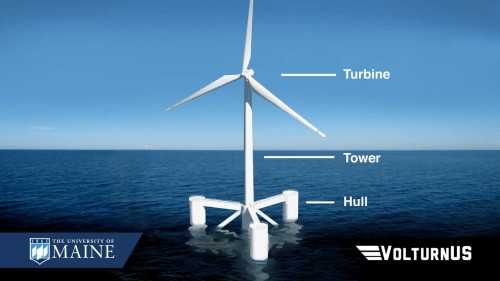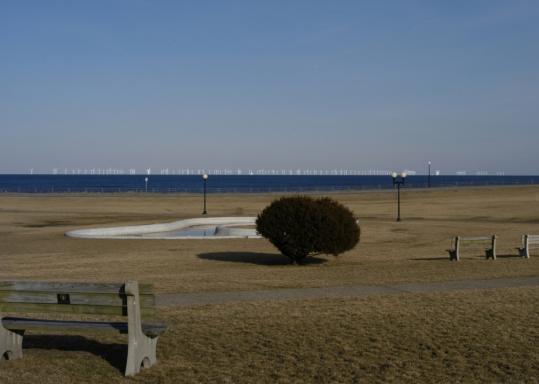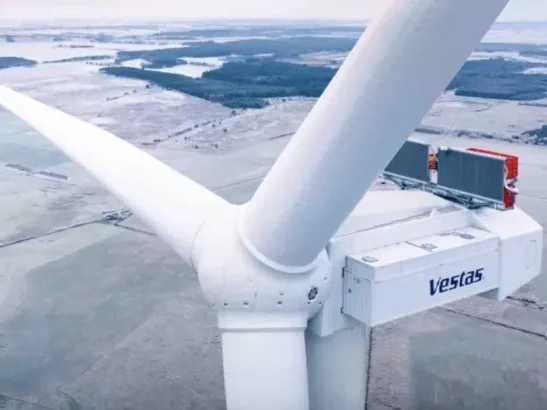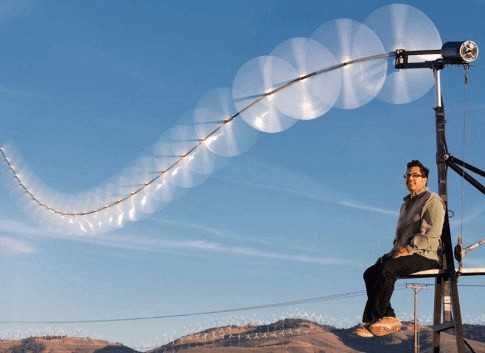Why is it, that when other countries, such as Belgium, the United Kingdom, Denmark, and Germany, have built massive turbine farms off their coastlines in the past few decades, the United States has no operational offshore wind farms? The US clearly embraces wind and has a plethora of onshore wind farms sprinkled all over its states.
Look at the sleepy town of Castine, Maine first settled in the early seventeenth century. It has buildings over a hundred years old, boats in a small harbor, a white lighthouse on the hill…. and a bright yellow wind turbine half a kilometer offshore installed last year. Called VolturnUS (a play on the Roman God of waters Volturnus) it is the only functioning offshore wind turbine in US waters. True, it is only 20 meters tall and only generates 20 KW of energy (enough to power about a dozen homes) but it is there and operating nevertheless.
Why has the US been so slow to embrace offshore wind farms? All efforts to tap the power of coastal winds in the US have gone nowhere because of environmental concerns, bureaucratic tangles, and political opposition. Strange that there were and still are similar environmental concerns (bat and eagle deaths, a nuisance to nearby population, etc.) but that onshore wind farms have blossomed.
But this may soon change. Recent ecological studies indicate that carefully planned wind farms should not significantly harm birds or marine mammals while businessmen and politicians are increasingly interested in exploring and investing in offshore wind power. In May of this year, the US Department of Energy awarded money to three demonstration projects planned for the coasts of New Jersey, Oregon, and Virginia. In addition, several state authorities are forging ahead with their own plans for offshore wind farms; turbines could begin to be set into offshore waters as early as next year.
The potential of offshore wind takes your breath away (if you’ll excuse the pun). If you include the harder-to-reach deep-water sites, the offshore territory of the United States has the estimated capacity to generate 4,200 GW of electricity, enough to supply four times the nation’s current needs! However, investors and developers will have to show that offshore wind can compete financially against other energy sources and clear the hurdles of many state and federal regulations that govern projects in coastal waters.
No project encapsulates the challenges facing offshore wind power better than Cape Wind, being developed by Energy Management of Boston, Massachusetts. The venture aims to take advantage of the strong winds and relatively calm waters of Nantucket Sound near Cape Cod, Massachusetts, some 350 kilometers southwest of Castine. The plan it is for 130 80-meter-tall turbines to produce 468 megawatts- and provide 75% of the electricity for Cape Cod and the nearby islands of Martha’s Vineyard and Nantucket.
But as we’ve highlighted in other articles the project has faced strong opposition for more than a decade including dozens of lawsuits against Cape Wind, claims that the project would harm birds and other wildlife, possible increase in electricity prices for consumers, and even the risk to airplanes flying into local airspace.
However, it is worth noting that except for one temporary decision, all of the judicial rulings have been in favor of Cape Wind. Cape Wind has already broken new ground by being the first US offshore wind project to complete a major environmental assessment. That study — thousands of pages long — and independent analyses have helped to appease and soothe some groups that were skeptical of the initial proposal.
It could just be that if, as hoped, Cape Wind construction begins next year and VolturnUS proves a (small-scale) success, the next decade will see US offshore wind take off and blossom in the same way its onshore wind farms have in the past two decades.





